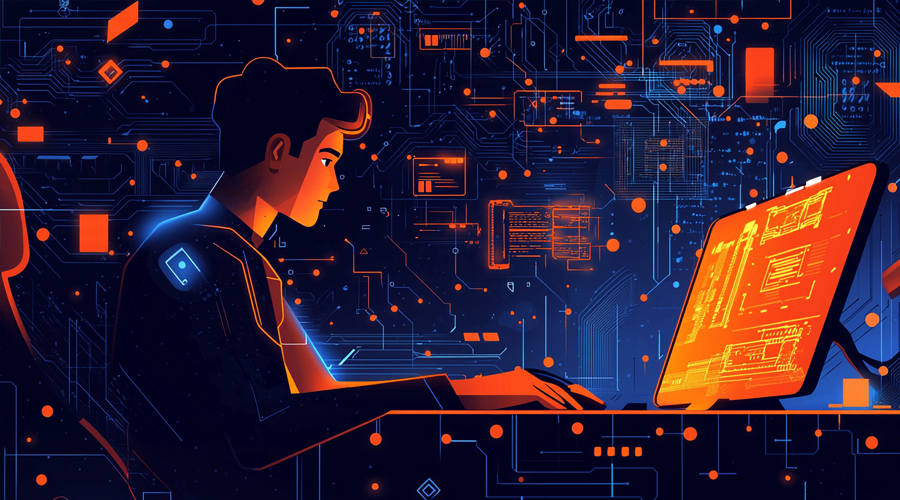Origins and Concepts
The waterfall model emerged as one of the earliest structured approaches to software development. It follows a sequential, linear flow, where each phase - requirements gathering, design, implementation, testing, and maintenance - must be completed before moving on to the next. This model assumes that requirements are well - defined and stable from the start. It provides a clear and predictable structure, making it easier to manage large - scale projects with well - understood technologies and processes.
On the other hand, Agile development, with the Scrum framework at its core, was born out of the need to respond more effectively to changing requirements and deliver value more quickly. Scrum emphasizes flexibility, collaboration, and iterative development. It views projects as a series of short sprints, typically lasting from one to four weeks. During each sprint, a potentially shippable product increment is created, allowing for continuous feedback and adaptation.
The fundamental concept of the waterfall model is based on a top - down, plan - driven approach. The entire project is planned in detail upfront, and any changes to the plan can be costly and time - consuming. In contrast, Scrum in Agile is a bottom - up, empirical process. It relies on the collective knowledge of the team, and decisions are made based on real - time feedback and inspection.
Project Planning
In the waterfall model, project planning is a comprehensive and detailed activity that occurs at the beginning of the project. All requirements are gathered, analyzed, and documented in great detail. A detailed project schedule is created, with specific milestones and deliverables for each phase. This level of planning provides a clear roadmap for the project, but it also requires a high degree of certainty about the requirements and the development process.
Scrum, in contrast, has a more flexible approach to planning. There is an overall product vision and a product backlog, which is a prioritized list of features, enhancements, and bug fixes. However, the detailed planning is done at the sprint level. At the start of each sprint, the team selects a set of items from the product backlog to work on. This allows for more immediate and relevant planning, as the team can adapt to changes in requirements and priorities more easily.
The waterfall model's detailed upfront planning can be beneficial for projects with well - defined requirements and a stable environment. However, it can be a hindrance when requirements are likely to change. Scrum's iterative planning approach, on the other hand, is better suited for projects where the requirements are evolving and the team needs to be able to respond quickly to new information.
Team Structure and Collaboration
The waterfall model often has a more hierarchical team structure. There are distinct roles for requirements analysts, designers, developers, testers, and project managers. Each role has a specific set of responsibilities and tasks, and communication typically flows through formal channels. This structure can be efficient for projects where the work can be clearly divided and coordinated.
In Scrum, the team structure is more collaborative and self - organizing. The Scrum team consists of a product owner, a Scrum master, and developers. The product owner is responsible for defining the product vision and priorities, the Scrum master facilitates the Scrum process and removes obstacles, and the developers are responsible for delivering the product increment. The team members work closely together, with a high level of communication and collaboration.
The self - organizing nature of the Scrum team allows for greater creativity and innovation. Team members can share ideas and knowledge more freely, which can lead to better solutions. In contrast, the hierarchical structure of the waterfall model may limit communication and collaboration, potentially resulting in a slower response to issues and a less innovative solution.
Adaptability to Change
One of the major differences between the two models is their ability to adapt to change. The waterfall model is not well - suited to handle changes in requirements once the project is in progress. Since each phase is dependent on the previous one, any change in requirements may require significant rework in multiple phases. This can be time - consuming, costly, and may even derail the project.

Scrum, on the other hand, is designed to embrace change. The short sprint cycles allow for quick adaptation to new requirements. The product backlog can be updated at any time, and the team can adjust the work for the next sprint accordingly. This flexibility enables the team to respond to market changes, customer feedback, and new business requirements more effectively.
For example, in a software project for a mobile application, if the market suddenly demands a new feature during the development process, a waterfall - based project may struggle to incorporate it without major disruptions. In a Scrum - based project, the product owner can simply add the feature to the product backlog, and the team can plan to work on it in the next sprint.
Quality Assurance
In the waterfall model, quality assurance is typically a distinct phase that occurs after the development phase. Testers are responsible for finding and reporting bugs, and developers then fix them. This separation of testing from development can lead to a delay in identifying and resolving issues, as problems may not be discovered until late in the project.
In Scrum, quality assurance is an integral part of the development process. The team follows practices such as test - driven development, where tests are written before the code is developed. This ensures that the code is testable and meets the requirements from the start. Additionally, the continuous feedback and inspection during each sprint help to identify and address quality issues early.
The Scrum approach to quality assurance can lead to a higher - quality product overall. By integrating quality into the development process, the team can catch and fix issues more quickly, reducing the cost and time associated with rework. In the waterfall model, the late discovery of quality issues can result in a longer and more expensive debugging and fixing process.
Project Delivery
The waterfall model aims to deliver a complete product at the end of the entire development cycle. This means that the customer may not see a working version of the product until the end of the project, which can be a long time, especially for large projects. This delay can lead to a lack of customer feedback during the development process and may result in a product that does not fully meet the customer's needs.
Scrum, in contrast, delivers a potentially shippable product increment at the end of each sprint. This allows the customer to see and use a working version of the product early and often. The customer can provide feedback, which can be incorporated into the next sprint. This iterative delivery approach ensures that the product is more likely to meet the customer's expectations.
For instance, in a web development project, a waterfall - based approach may take months to deliver a fully - functional website. In a Scrum - based project, the customer can start using a basic version of the website within a few weeks and provide feedback to improve it over subsequent sprints.
Conclusion
In conclusion, the Scrum framework in Agile development and the waterfall model in traditional development have their own strengths and weaknesses. The waterfall model is suitable for projects with well - defined requirements, a stable environment, and a need for a highly structured and predictable development process. It provides a clear roadmap and can be effective for large - scale projects where the technology and processes are well - understood.
However, in today's rapidly changing business environment, where requirements are often fluid and the need for quick delivery and adaptation is crucial, the Scrum framework in Agile development offers significant advantages. Its iterative nature, self - organizing teams, and ability to embrace change make it a more flexible and responsive approach. It allows for continuous feedback, early delivery of value, and better alignment with customer needs.
Organizations need to carefully evaluate the nature of their projects, the stability of requirements, the level of collaboration required, and the need for adaptability when choosing between the two models. By understanding the differences between Scrum in Agile and the waterfall model, they can make an informed decision that will lead to more successful software development projects. Whether it's a startup looking to quickly iterate on a new product or a large enterprise undertaking a complex project, the right choice of development methodology can have a profound impact on the project's outcome.
ARTICLE TITLE :Scrum framework in Agile vs. waterfall model in traditional development ,AUTHOR :ITpmlib

















